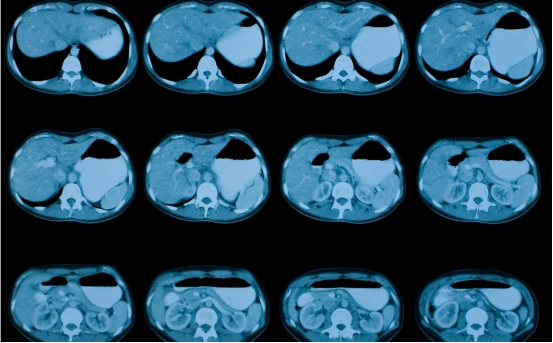The human hand is one of the most intricate and functional structures in the body, responsible for a wide range of activities — from holding a pen to performing complex surgeries. When the hand is injured or affected by disease, even simple tasks like buttoning a shirt or typing can become difficult. In many cases, non-surgical treatment such as splinting, physical therapy, or medications can resolve the issue. However, in some situations, hand surgery becomes necessary to restore function, relieve pain, or prevent permanent damage.
What Is Hand Surgery?
Hand surgery is a specialized branch of orthopedic or plastic surgery that focuses on conditions affecting the fingers, hand, wrist, and sometimes the forearm. It encompasses a wide range of procedures — from repairing nerves and tendons to joint reconstruction, fracture fixation, and correction of congenital deformities.
Surgeons trained in hand surgery often have backgrounds in orthopedics, plastic surgery, or general surgery, and they possess advanced skills in microvascular techniques, bone work, and soft tissue management.
When Hand Surgery Is Necessary?
Hand surgery is generally considered necessary when:
- Conservative treatments have failed
- The function of the hand is significantly impaired
- Pain is persistent or worsening
- There is structural damage that cannot heal on its own
- Delay could lead to permanent disability or deformity
Below are some specific conditions and scenarios where surgery may be the best or only option.
Traumatic Injuries
Injuries to the hand — whether from accidents, sports, or workplace incidents — are one of the most common reasons for hand surgery.
Fractures and Dislocations
- Not all broken bones in the hand need surgery. However, if the fracture is displaced, unstable, or involves a joint, surgical fixation using pins, plates, or screws may be required to realign the bones and restore hand function.
Tendon or Ligament Injuries
- Tendons connect muscle to bone, enabling hand movement. Complete tendon lacerations, especially in flexor tendons (which bend the fingers), often require surgical repair.
- Ligament tears, such as in the thumb (skier’s thumb), may also need reconstruction to prevent long-term instability.
Nerve Injuries
- Deep cuts or trauma can injure the median, ulnar, or radial nerves. Nerve repair or grafting may be necessary to restore sensation and motor function, especially if symptoms of numbness or weakness persist.
Carpal Tunnel Syndrome (CTS)
Carpal tunnel syndrome is a condition caused by compression of the median nerve as it travels through the wrist. Early stages may respond to wrist splints or corticosteroid injections. However, when symptoms like numbness, tingling, and weakness in the fingers become severe or persistent, carpal tunnel release surgery is often recommended.
Surgical decompression of the nerve can provide long-term relief and prevent permanent nerve damage if performed in time.
Trigger Finger
Trigger finger occurs when the tendon sheath in a finger becomes inflamed, causing the finger to catch or lock in a bent position. Mild cases may improve with rest or corticosteroid injections. If the problem persists or interferes with daily activities, surgical release of the tendon sheath can restore smooth finger movement.
Dupuytren’s Contracture
This is a condition in which thickened connective tissue in the palm forms nodules and cords, eventually pulling one or more fingers into a bent position. When the contracture begins to limit hand function, surgical excision or release of the fibrous tissue becomes necessary to straighten the fingers.
Arthritis of the Hand or Wrist
Osteoarthritis and rheumatoid arthritis can cause joint destruction, pain, and deformity in the hand and wrist. When medications and splinting fail, surgery may be required to:
- Remove inflamed tissue (synovectomy)
- Fuse joints (arthrodesis) for stability
- Replace joints (arthroplasty) for mobility
- Correct deformities like swan neck or boutonnière deformity
The type of surgery depends on the joint involved, severity of the condition, and the patient’s lifestyle and goals.
Ganglion Cysts
These are noncancerous lumps filled with fluid that typically develop on the back of the wrist or hand. While not dangerous, they can be painful or interfere with joint motion. If aspiration fails or the cyst recurs frequently, surgical removal may be indicated.
Tumors and Masses
Most hand tumors are benign, such as lipomas, epidermal cysts, or giant cell tumors of the tendon sheath. However, any growing mass, especially if painful or affecting function, may require surgical removal. Malignant tumors are rare but must be treated promptly with wide excision and sometimes additional therapy.
Congenital Hand Differences
In children, conditions like polydactyly (extra fingers), syndactyly (webbed fingers), and congenital trigger thumb often require surgery to ensure normal function and appearance. The timing and type of surgery are carefully planned to optimize growth and hand development.
Infections
Serious infections such as flexor tenosynovitis, deep abscesses, or septic arthritis can rapidly destroy tissues in the hand. When oral antibiotics are ineffective, surgical drainage and debridement become urgent to save function and prevent spread.
Chronic Tendonitis or De Quervain’s Tenosynovitis
When conservative treatments like splinting, ice, and injections fail, surgical release of the inflamed tendon sheath may be required to alleviate pain and restore movement.
How Do Doctors Decide If Surgery Is Needed?
Physicians consider several factors when determining if hand surgery is necessary:
- Severity of symptoms and loss of function
- Response to previous non-surgical treatments
- Risk of worsening or permanent damage if surgery is delayed
- Patient’s age, activity level, occupation, and health status
- Imaging results (X-rays, MRI, ultrasound) that show structural damage
Shared decision-making is essential. The patient and doctor must weigh the benefits and risks together before proceeding.
What to Expect Before and After Hand Surgery
Preoperative evaluation includes a full history, physical exam, and imaging studies. Patients may need to stop certain medications and arrange for time off work.
Recovery time varies depending on the type of surgery:
- Minor procedures like trigger finger release may allow return to activity within a few days.
- More complex surgeries, such as joint reconstruction or tendon repair, may require weeks or months of rehabilitation.
Hand therapy is often prescribed post-operatively to restore strength, flexibility, and function.
Conclusion
Hand surgery becomes necessary when non-surgical treatments are no longer effective, or when there is a risk of permanent loss of hand function. Whether it’s trauma, arthritis, nerve compression, or congenital issues, timely surgical intervention can restore independence, improve quality of life, and in some cases, prevent irreversible damage.
If you are experiencing persistent pain, weakness, deformity, or loss of function in your hand, consult a hand specialist. With a careful evaluation and expert guidance, the right treatment — surgical or not — can help you regain comfort and control over one of the body’s most important tools: your hands.























